Naach the night away
The Messenger follows the journey of Naach Naatya, an International Night act, from inception to showtime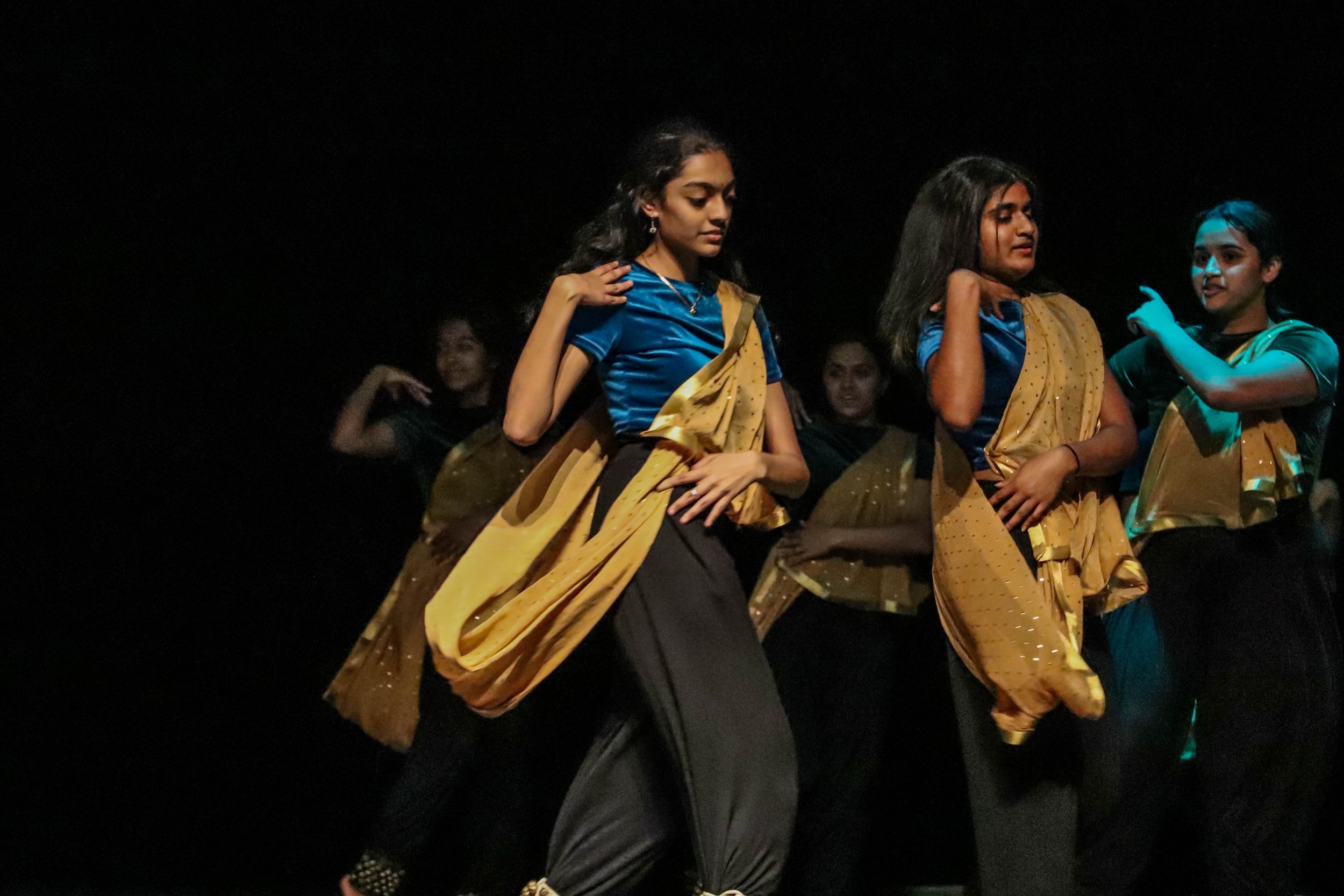
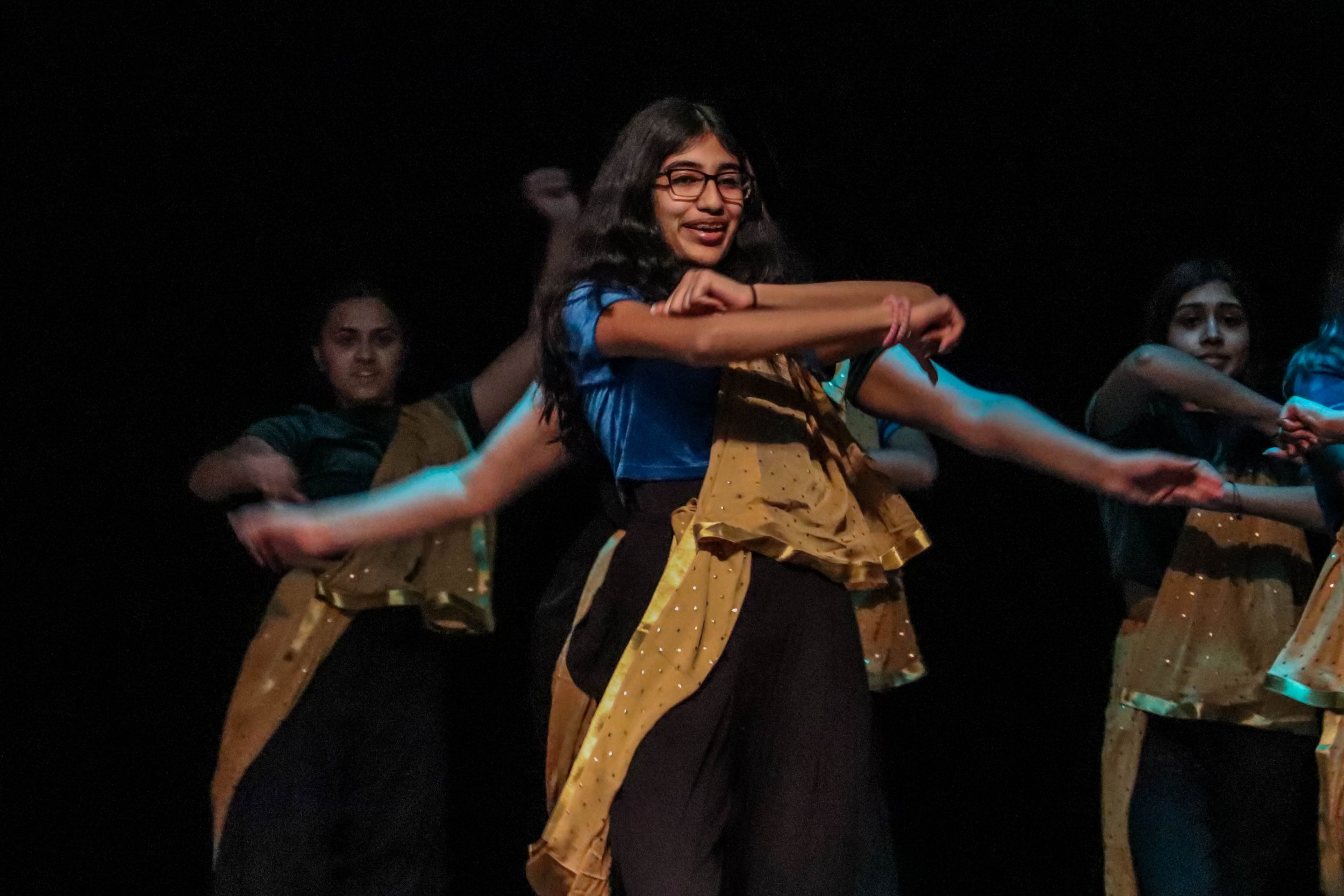
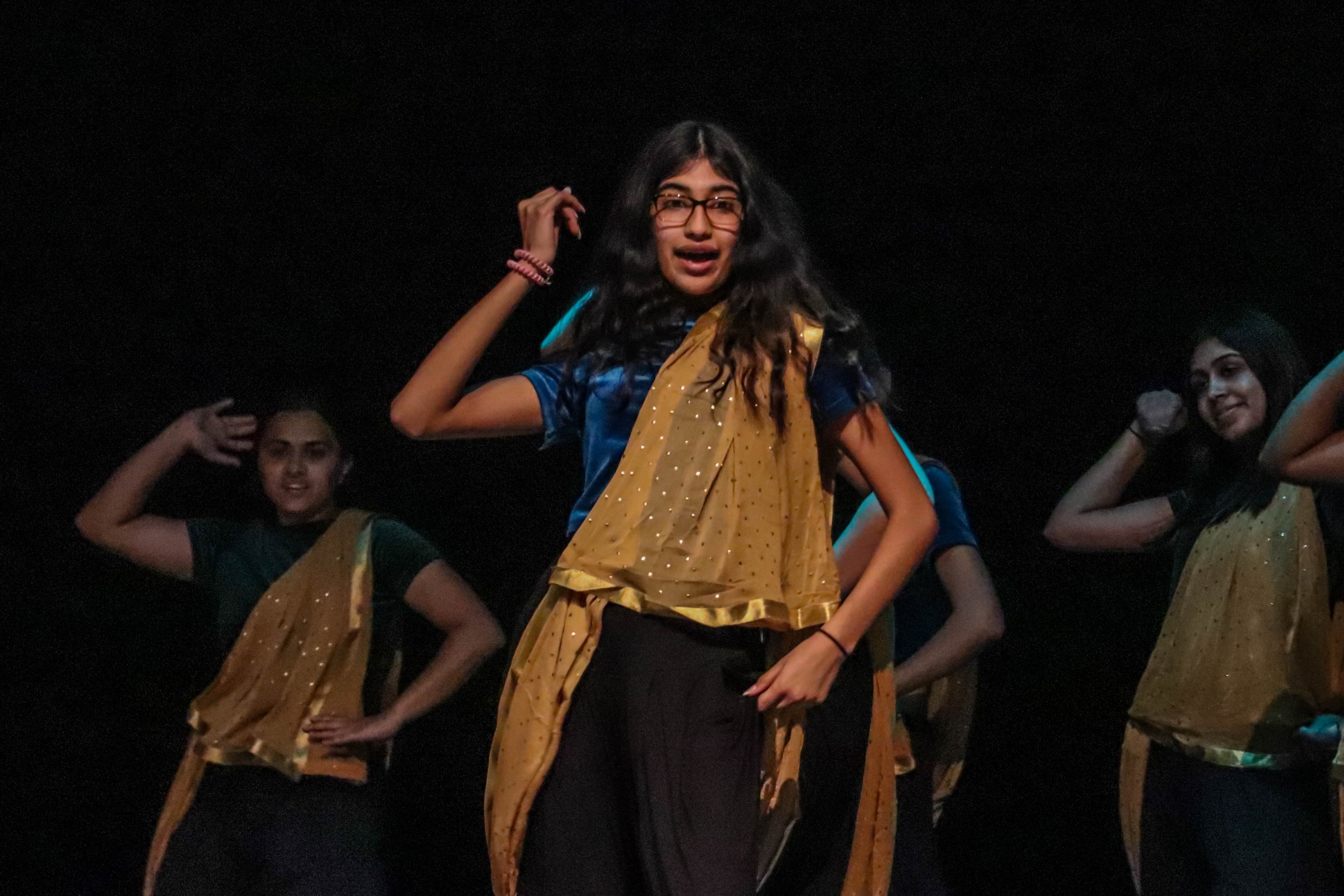
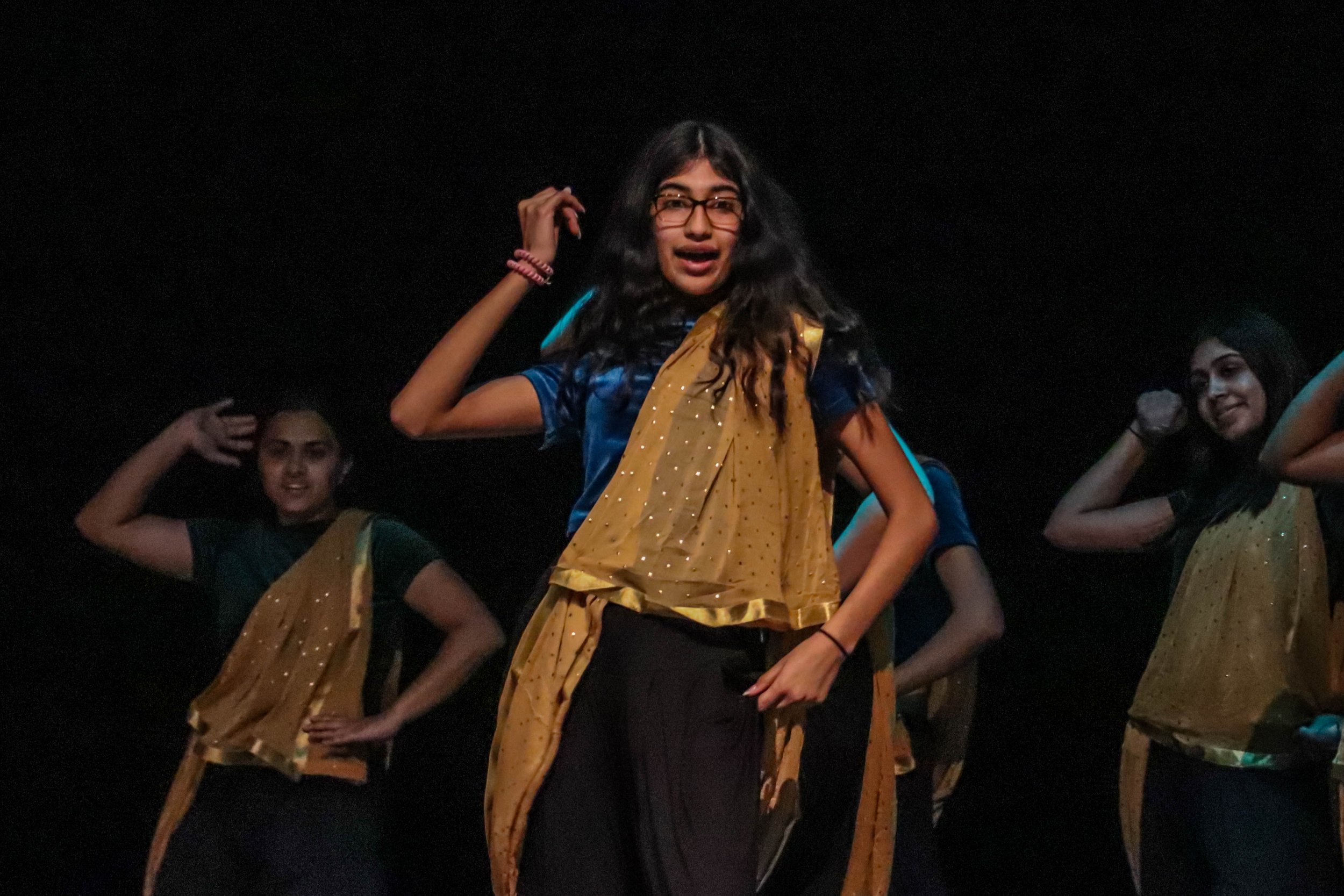
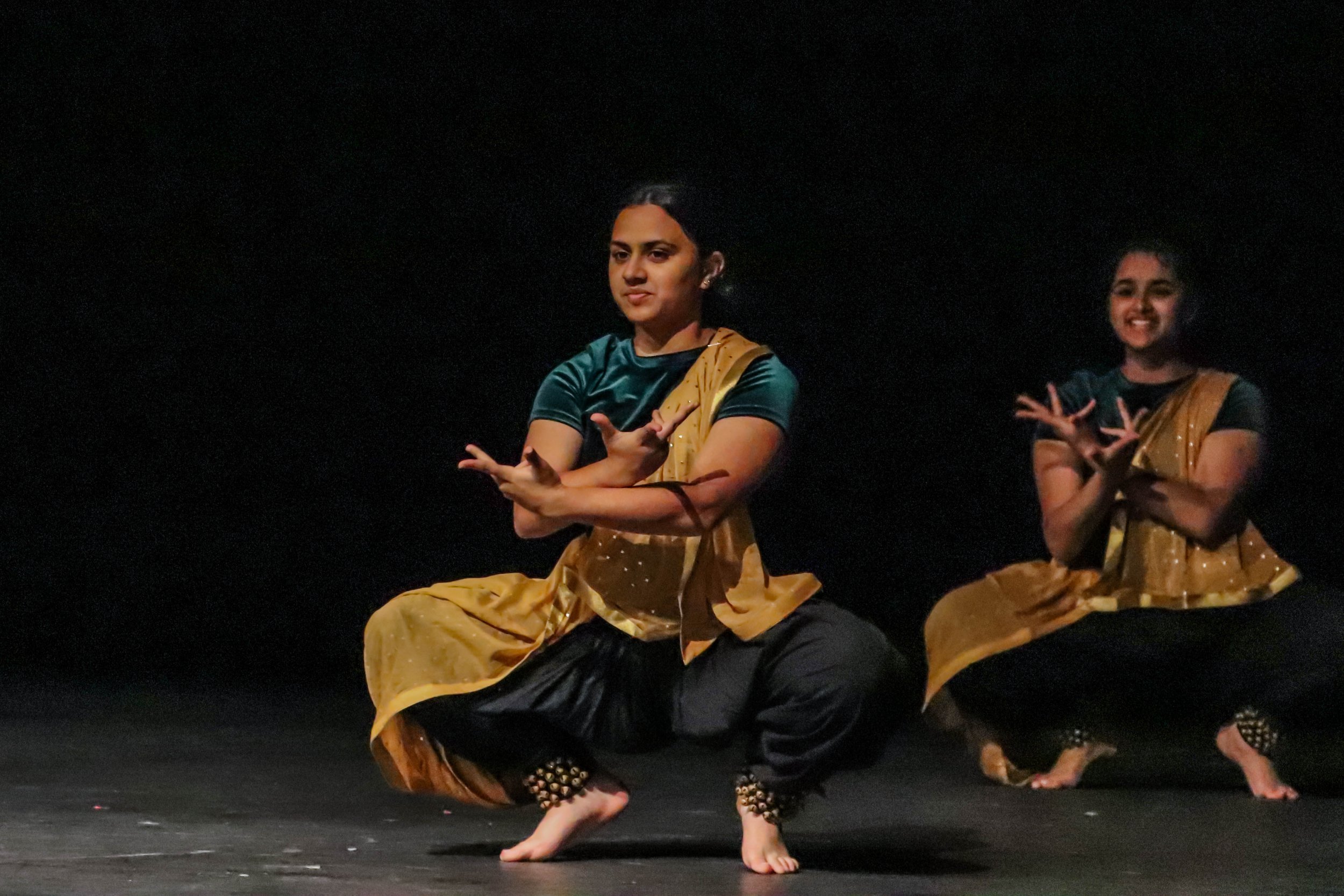
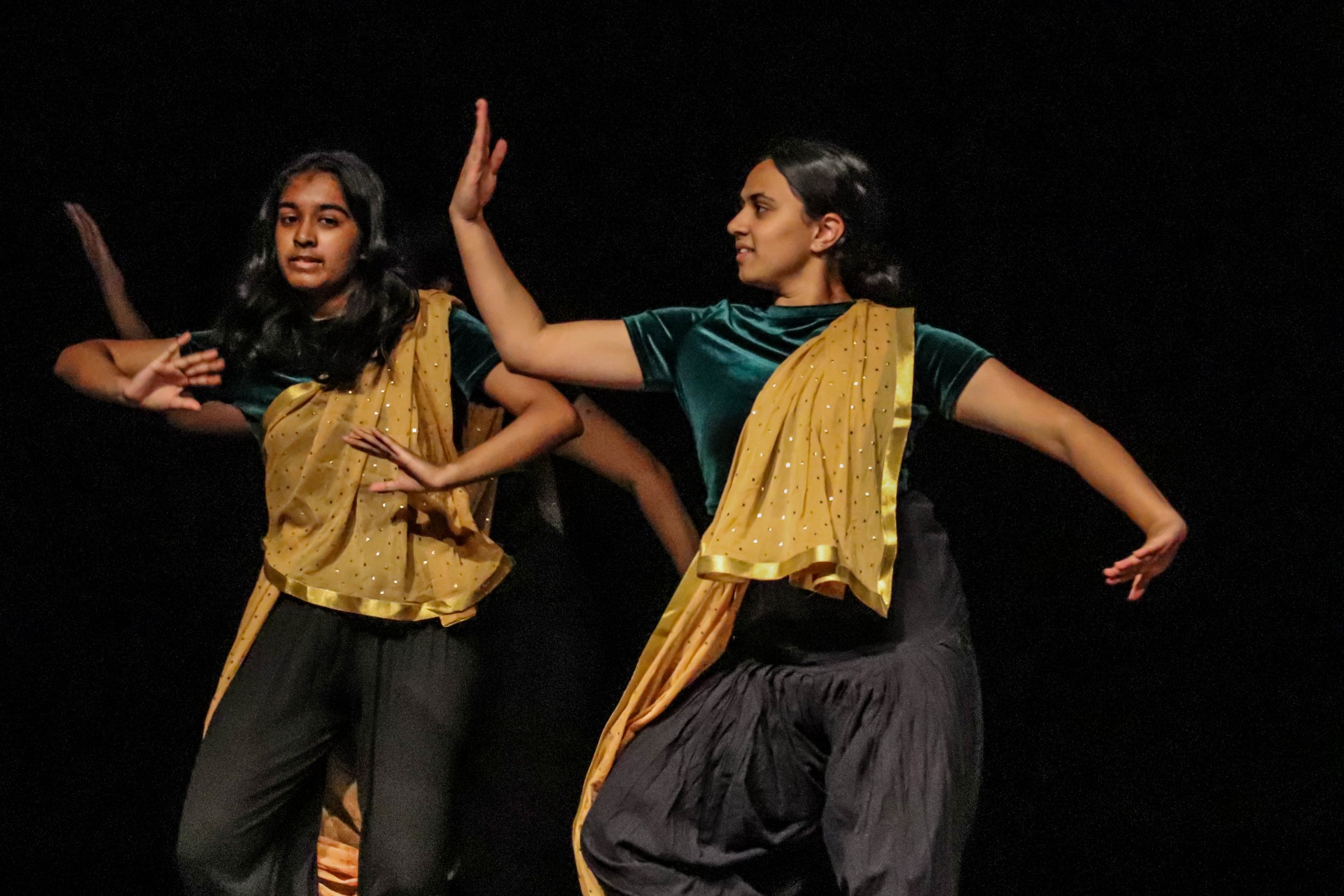
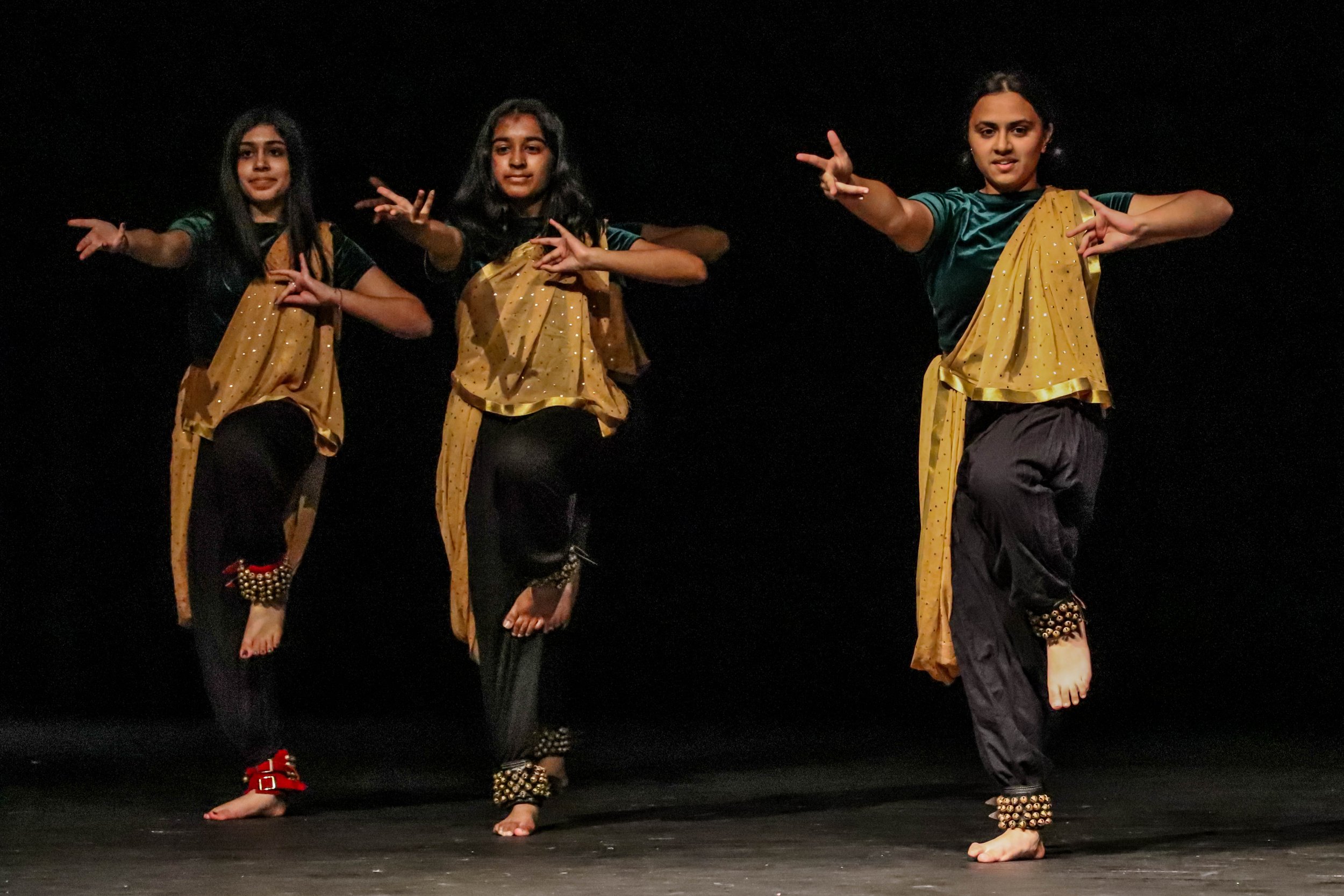
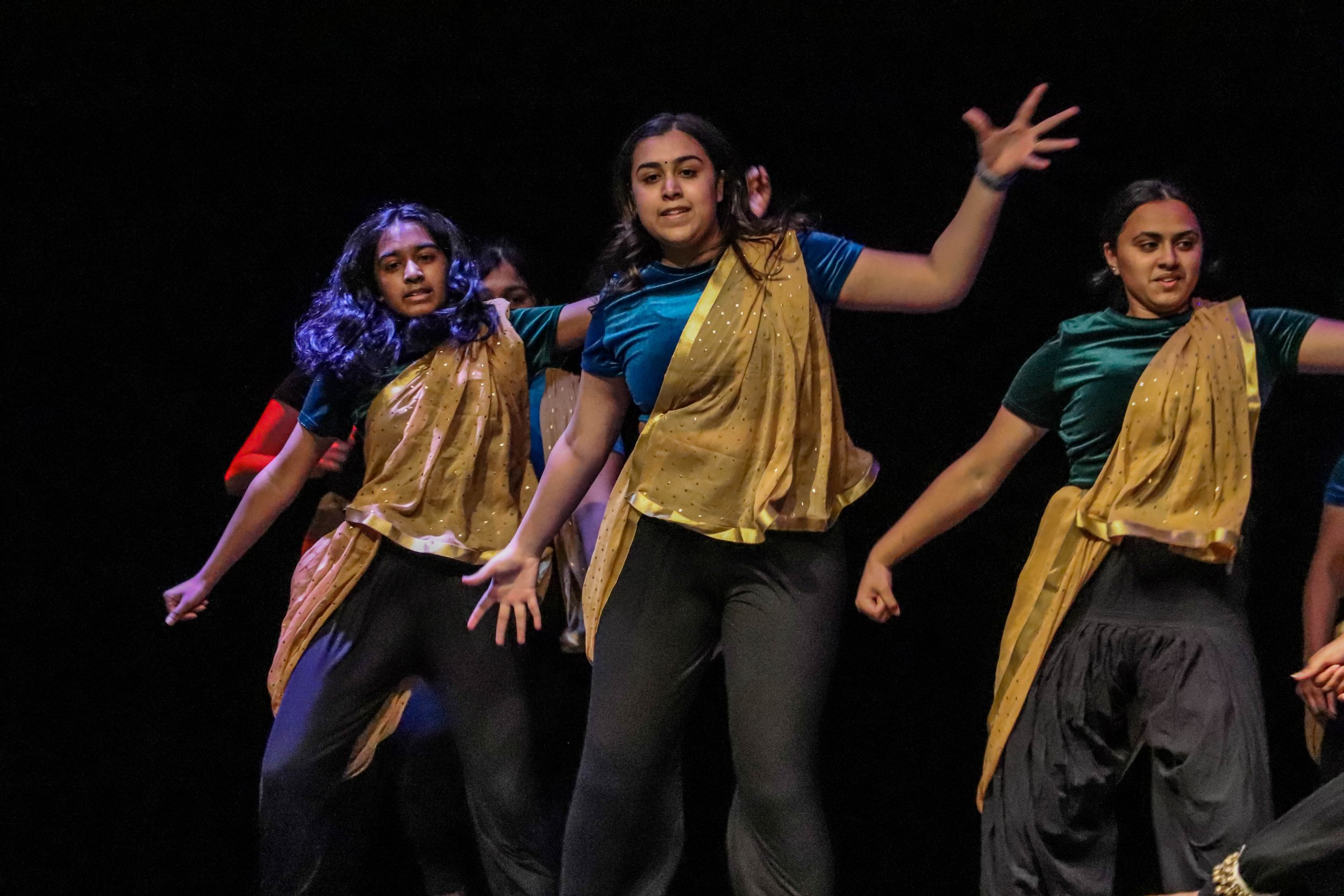
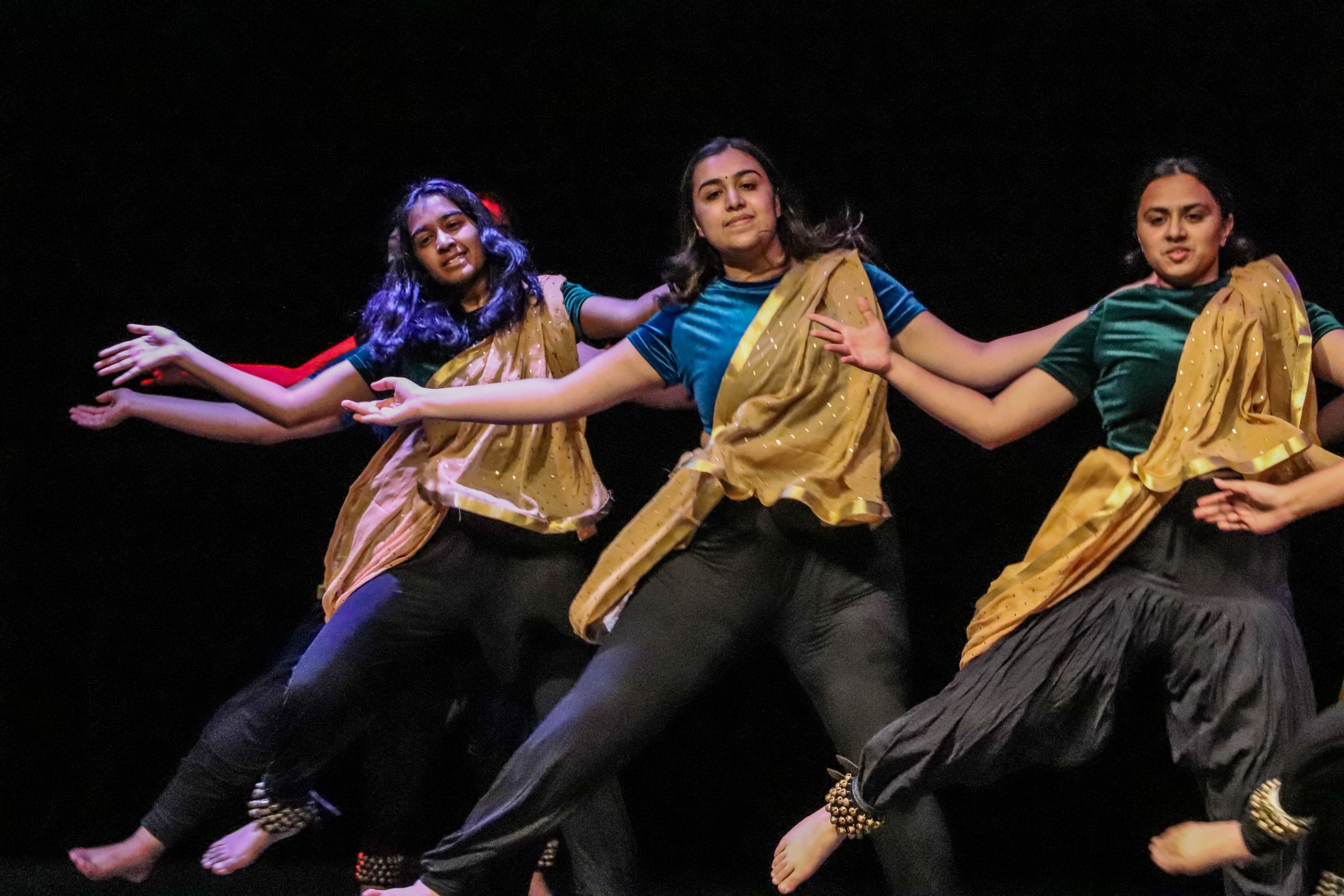
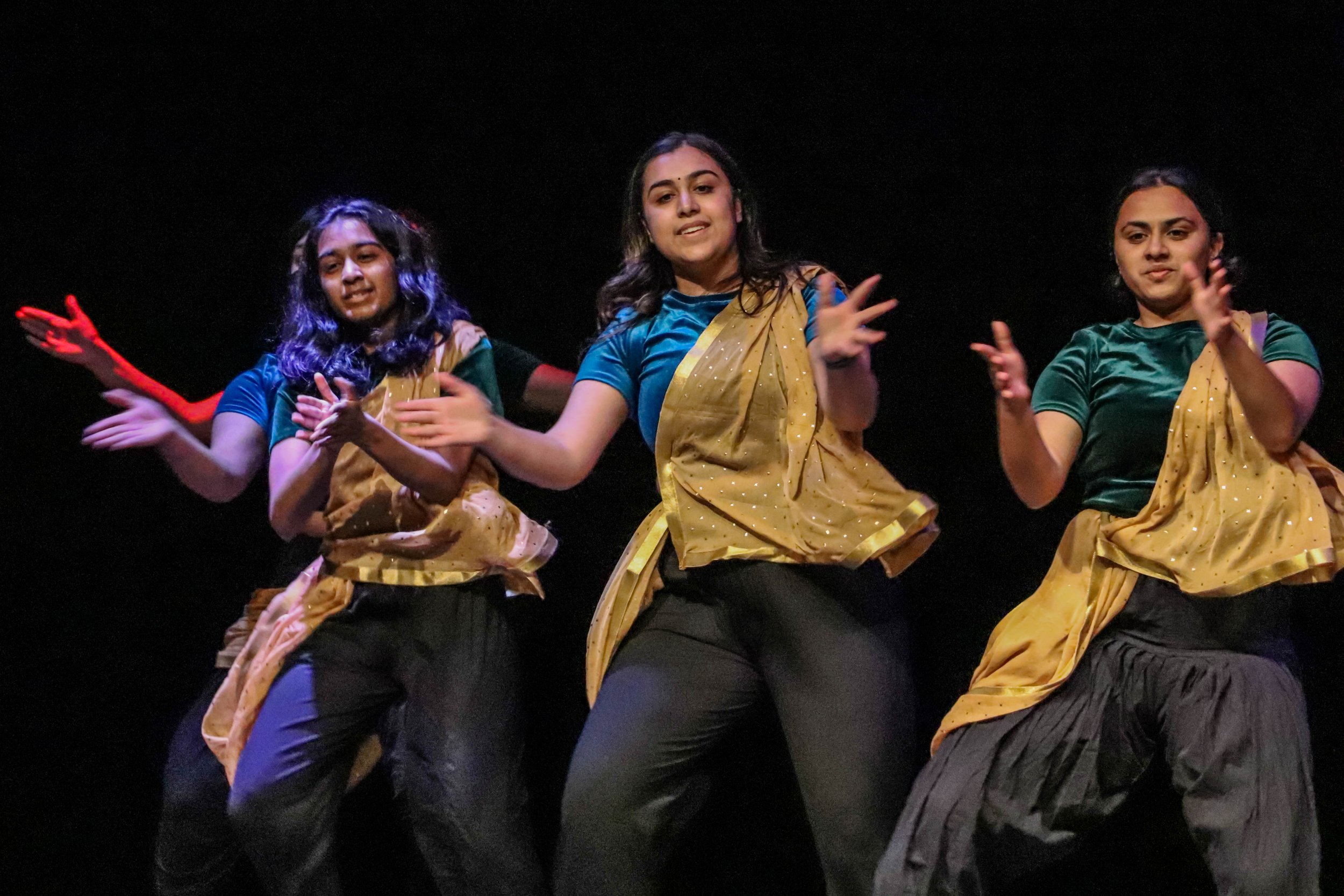
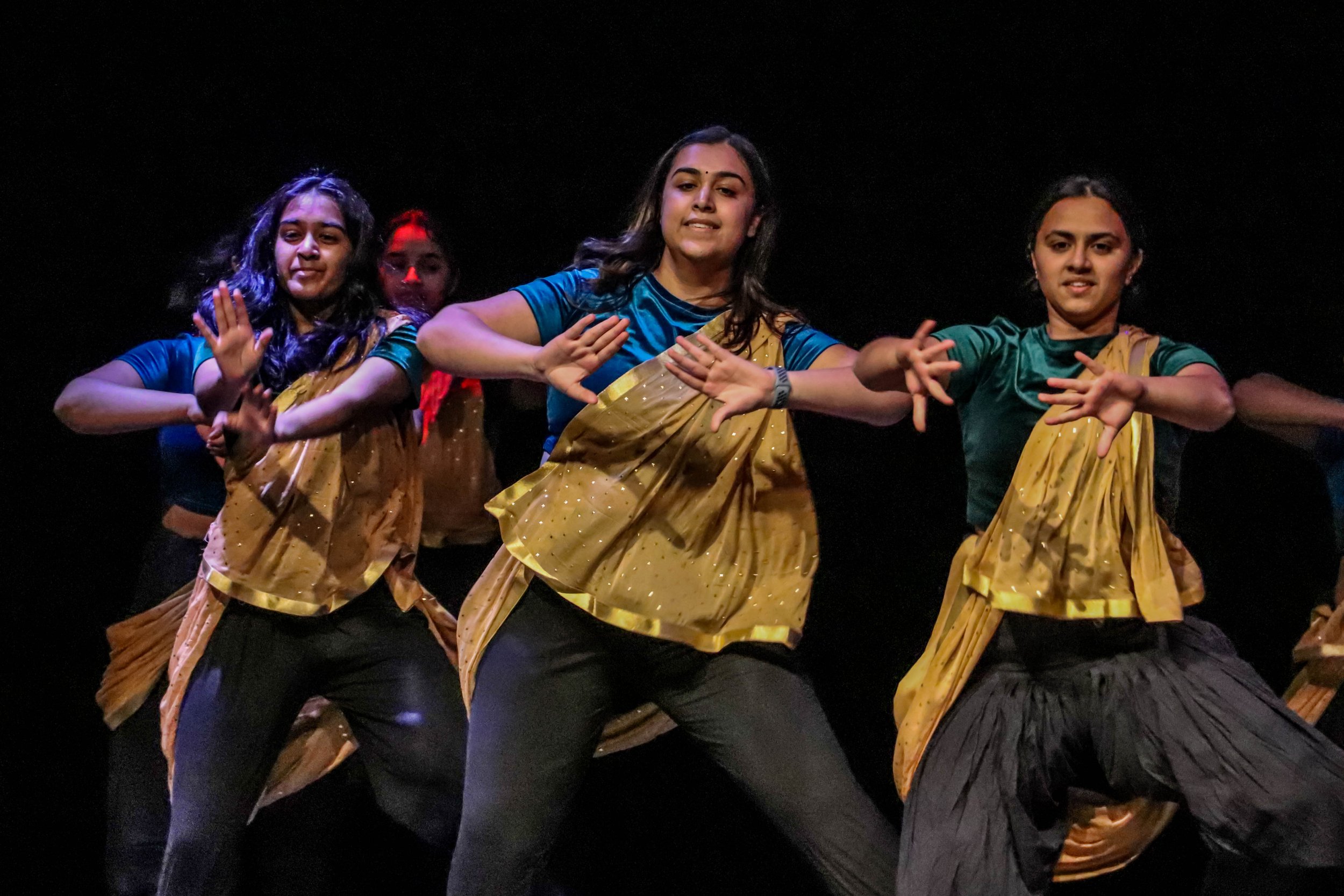


Photos by Gavin Chen, Staff Writer
Suhani Mahajan, Staff Writer
Club Fair 2021. After three weeks into the new school year and after a year-and-a-half of remote education, sophomore Arushi Cumer explores the wide range of possible extracurricular activities to join. Among the rush of students all around and the seemingly endless supply of treats, one presentation, in particular, called her attention. With a computer screen displaying dance bells and a vibrant trifold adorned with mehndi-inspired paisley patterns, Naach Naatya enraptured Cumer from the start.
“I have been doing an Indian classical dance called Kathak since I was five, so I’ve been doing it for a really long time, but it’s been confined to a studio,” Cumer said. “When I saw the club, I knew I wanted to branch out a little more in high school and get out of my little bubble. I thought this was going to be a good way to do something that I have to be confident in since I love to dance.”
Founded in 2018, Naach Naatya originally consisted of two individual clubs that performed at International Night together. The club Naach, named after the Hindi word for dance, focused more on Bollywood dance styles, while Naatya, referring to traditional theatrical dance, prepared more classical Indian styles. While both performed annually at International Night, they merged in 2019. Of the eight traditional types of Indian classical dance, Naach Naatya features Bharatanatyam, originating from Tamil Nadu; Kathak, originating from Uttar Pradesh; and Kuchipudi, originating from Andhra Pradesh in its choreography.
During remote learning, however, the lack of an International Night meant Naatya struggled to garner the excitement it had in years previous. However, dancers continued to choreograph new routines, coming back in full force in the 2021-22 school year. But the return to in-person rehearsals was not without its problems—the sudden burst of activities meant scheduling issues.
“It’s Northview—Naatya’s not anyone's one thing,” junior Sajuana Vangala, one of the officers for Naatya, said. “Everyone in Naatya has Naatya, Speech and Debate, and FBLA, HOSA, and this or that. Naatya is just another thing in the series, and just trying to work around everyone's schedules was very difficult. It still proves a struggle from time to time.”
But, thanks to Vangala’s efforts, coupled with the dancers’ dedication to Naatya, the group perfected its choreography just in time for the auditions for International Night. Since Naatya had always made it into the show, the group felt increased pressure to maintain their reputation. Their new routine, 90 seconds long, would establish their post-quarantine legacy.
“Right before auditions, we were like ‘group hug really quick!’ and we hyped each other up,” senior Mahathi Gumudavelli, one of Naatya’s presidents, said. “After, I was really tired and really proud of them. It was a time crunch because we all have crazy schedules —we weren't even sure if we’d have the dance done—but we pulled through. After auditions, I knew we’d done pretty well.”
Naatya received news of their auditions the day before Winter Break, but the onset of the Omicron variant threw uncertainty into their plans. Without knowing if the show was going to hold or not, Naatya ceased rehearsals and members grew distant from each other.
“After you get the news that you got into International Night, there’s this wave of adrenaline you keep riding until actual International Night; it’s what gets you through those three weeks of intensive rehearsals. But, it was like we were riding this wave, and then when [International Night] got postponed, we fell off.” Vangala said. “But the pressure of International Night [came] back. You can see everyone going, ‘Oh my God. It's here. It's here. It's coming. It's coming. It's coming.’”
Indeed, after a week of remote school and a few weeks more with a mask mandate, Northview announced a new—albeit delayed—date for International Night: March 30, 2022.
Passion renewed with this news, and Naatya members regrouped. They expanded their choreography to include other styles of Indian dance, like Bhangra and Garba. Their performance this year is unique to their history in its unusually wide variety of dance styles, but the extra hours of rehearsals it mandated conflicted strongly with members’ personal, academic, and athletic commitments.
“A lot of spring sports have started, and a lot of people on our team are in tennis or track, so they have practice for that almost everyday. If International Night was in January, they wouldn’t have those sports every single day after school,” senior Neya Nirmal, one of the officers for Naatya, said. “So, it’s been a struggle getting everyone to come to practice.”
Driven in part by necessity, Naatya managed to get together for the run-through rehearsal on March 19, 2022. While all acts gathered for International Night in the auditorium, club representatives gathered in the field by Parsons Road as part of Hands on Northview. The overlapping hours meant Naatya had to alternate members who were practicing and doing community service, but by the time their act was scheduled to rehearse onstage, each member knew the choreography well enough to execute the dance.
Naatya’s routine highlights the dancers’ graceful movements, which are punctuated by clapping, stomping, and the ringing of the bells they tie around their feet. These bells, called Ghungroo by Bhangra dancers, or Gajjalu by Kuchipudi dancers, bring attention to a dancer’s complex footwork and symbolize their sacred elements.
“When you wear bells, it’s like a symbol that you’re ready to present yourself to an audience,” junior Pallavi Dokka said. “You’re going to get on stage. You’re going to perform for someone. You’re going to tell a story.”
In fact, the elaborate hand motions the dancers make all have their own meanings. Each move symbolizes an addition to their story the dance conveys. And as the dancers prepare their routine, though there are official leaders instated, the process of organizing choreography simplifies to a group effort. Dancers with more experience with certain styles lead their respective portions, but accept suggestions from the rest of the group. In this way, ideas build on each other to refine the run-throughs in a way that highlights the diversity of the group.
“Since less people learn and know Kathak, that part of [the dance] has to be oversimplified; it’s really more of a fusion dance than classical, but when everyone’s so passionate about [the dance], you find a way to get it across,” junior Rhea Sharma, the other president of Naatya, said. “Our club really focuses on the fact that really anyone should be able to come in, even as a complete novice, if they’re interested.”
Meanwhile, with less than 24 hours until International Night, Naatya practiced one last time at dress rehearsals. They emerged from the dressing rooms in their costumes: black, flowy Patiala pants and velvet blouses, with half the team wearing blue blouses if they danced in the Kathak part, and the other half wearing green if they danced in the Bharatanatyam or Kuchipudi part. A gold dupatta, or Indian scarf, hung across each dancer’s torso as the costume’s unifying element. As it came time for the fifth act to perform on stage, Naatya’s near-flawless act reflected the dancers’ hours of hard work and dedication.
“It’s pretty exciting, honestly, as a person who’s doing International Night for the first time,” sophomore Swathi Muruganandan, who leads the Bhangra section of the act, said. “I hope I brought enough energy today, and, hopefully, we can bring a lot more energy tomorrow. We’re definitely getting there.”
With the return of International Night also came the return of a Naatya alumna. Srinidhi Thangaraj, who graduated in the summer of 2021 and danced with Naach Naatya since its inception, came back during dress rehearsals to visit, support, and celebrate her old teammates.
“It feels really weird to see them and not be there with them. I wish I was up there,” Thangaraj said. “They’ve worked hard and they’re really good. They’re not the kids they used to be; they’ve grown up, and I’m so proud of them.”
And at last, the long-awaited day came: March 30, 2022. The first show began at 6 p.m., and when their turn came, Naatya’s dancers performed before an audience for the first time in over two years. But the dancers were even more excited for B show, which traditionally is reputed for its more engagingly wild audience.
Backstage after their first performance, dancers grabbed dinner, and quickly revised small parts of the routine to perfect everything for their next show. But, even as excitement grew for this final performance of the night, the mood was tinged with a note of bittersweetness as Naatya realized that B show would be some dancers’ last International Night performances.
“It’s going to be my last B show, and it really means a lot because Naatya’s been such a big part of my high school career—[Naatya] literally defines it. Naatya’s in every one of my college essays; it’s in everything,” Gumudavelli said. “The fact that it’s going to be our last show, our last group huddle, our last Naatya meeting, our last performance, our last time hearing the audience clap, our last time hearing [the audience] scream, and our last time not being able to hear the music—it’s going to be a roller coaster of emotions.”
Naatya delivered a once-in-a-lifetime performance during B show, just as it had planned to since last August. Members demonstrated tremendous energy as they danced to a medley of Indian songs. Nothing could have prepared them for the sheer volume of the audience’s enthusiastic cheering to clapping to the bass of their songs, but their sweat and tears of their hours of rehearsal pulled through. Triumphant, they arranged on stage in their ending pose for the last time this year, accompanied by the audience’s near-deafening celebration of their performance.

